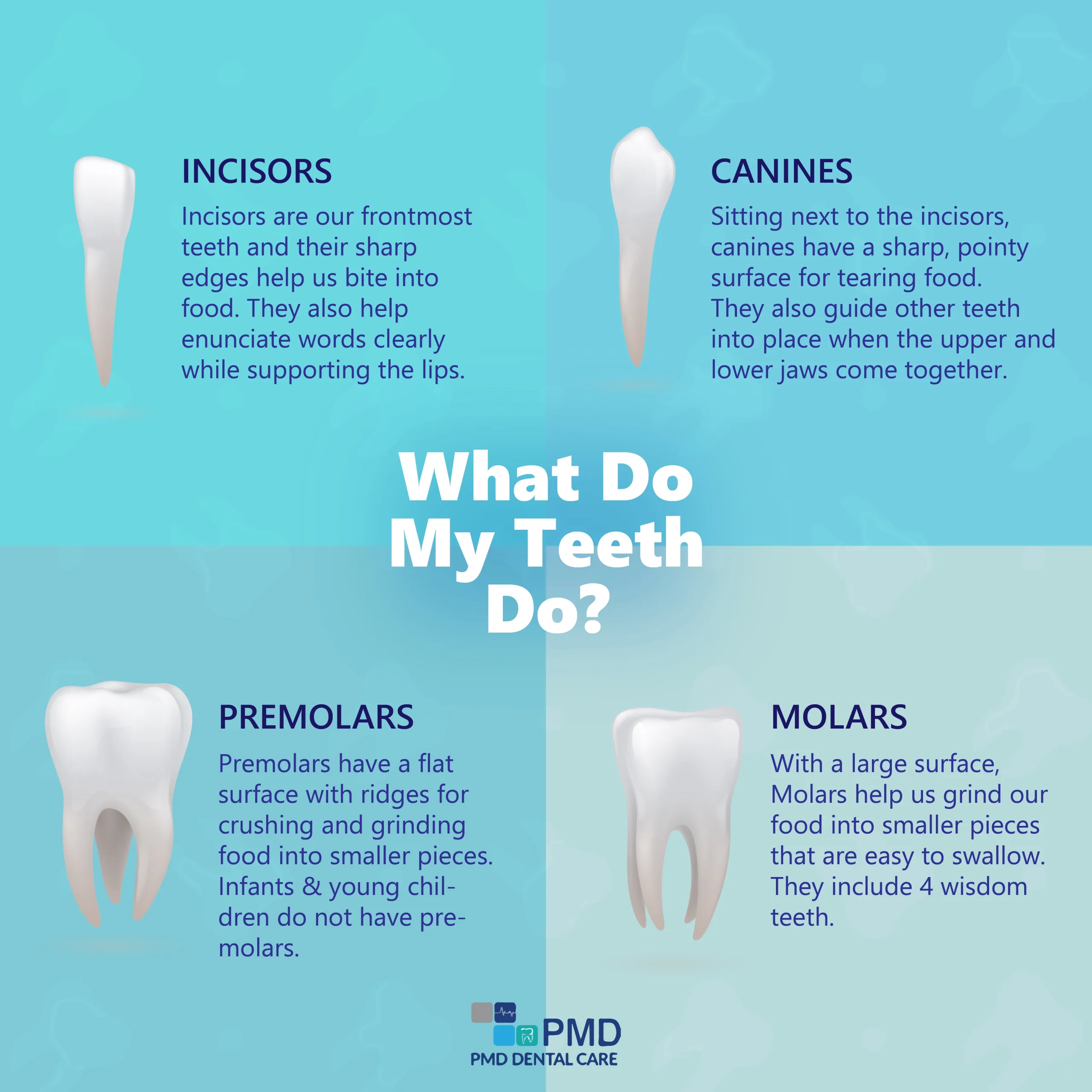What are the Different Types of Teeth?

As humans, we have two different sets of teeth during our lifetime – our baby teeth (primary/temporary teeth) and adult teeth (secondary/permanent teeth).
Primary teeth emerge when a baby is about 6 months old, in a process called teething. They are most likely to have all 20 of their baby teeth by the time they turn 3, and these teeth can be classified into incisors, canines and molars. They play an important role in speech development, chewing and saving space for adult teeth.
It is recommended to take your child for their first dental visit as soon as the first tooth appears or by the time they turn one. These visits will ensure positive dental experiences and good oral health in the long run.
Eventually, around the age of 6, baby teeth will start falling, making way for the 32 permanent adult teeth to erupt. Adult teeth are classified into four types, with each having a specific function to serve. We have:
- 8 incisors
- 4 canines
- 8 premolars
- 12 molars (including 4 wisdom teeth that may erupt between the ages of 17 and 25)

Incisors
The 4 chisel-shaped teeth located at the front of your mouth on both the upper and lower jaw are called incisors. They are the first set of teeth to emerge, appearing at about 6 months of age.
Incisors are of two types: central incisors and lateral incisors. Central incisors are the teeth in the middle, while the lateral incisors are on either side of them. These teeth have sharp edges that help you bite into food and cut it into smaller pieces that are easier to chew.
Canines
Canines are the sharp, pointy teeth next to the lateral incisors. There are 4 canines, one on each side of the upper and lower incisors.
Also called cuspids (meaning a tooth with a single point), these canine teeth are used for tearing food apart. They are also the sharpest and longest teeth in the mouth and closely resemble fangs.
Premolars
Located between the canines and molars are your premolar teeth. They are also called bicuspids because of the two pointed cusps on their biting surface. Premolar teeth are bigger than incisors and canines, with ridges that make them perfect for chewing and grinding.
These premolars are considered to be transitional teeth because they guide food from the canines to the molars at the back of the mouth for chewing.
Molars
Molars are the biggest of all teeth, with broad, flat surfaces used for crushing and grinding, and are located at the back of the mouth.
Wisdom teeth are also a type of molars (the third molars) and are the last set of teeth to erupt. However, not everybody will get all 4 wisdom teeth. There may also be instances where your wisdom teeth may not emerge, or the tooth may emerge partially and get stuck (impacted) against the nearby tooth or bone. In such cases, you may need to extract your wisdom teeth to prevent infection or damage to surrounding teeth.
From chewing and biting to helping us speak clearly, our teeth play a major role in maintaining functionality and appearance. While teeth are one of the strongest parts of the body, they also need proper care and maintenance to last a lifetime.
Make sure to practice a good oral hygiene routine that includes:
- Brushing your teeth twice daily
- Flossing your teeth once a day
- Regular visits to the dentist every 6 months for a check-up and clean
With these simple practices, you will be able to keep your teeth in great shape while maintaining the appearance of your smile and the functionality of your mouth.
Missed your 6 monthly dental check-up? Call our friendly team to schedule an appointment today.


